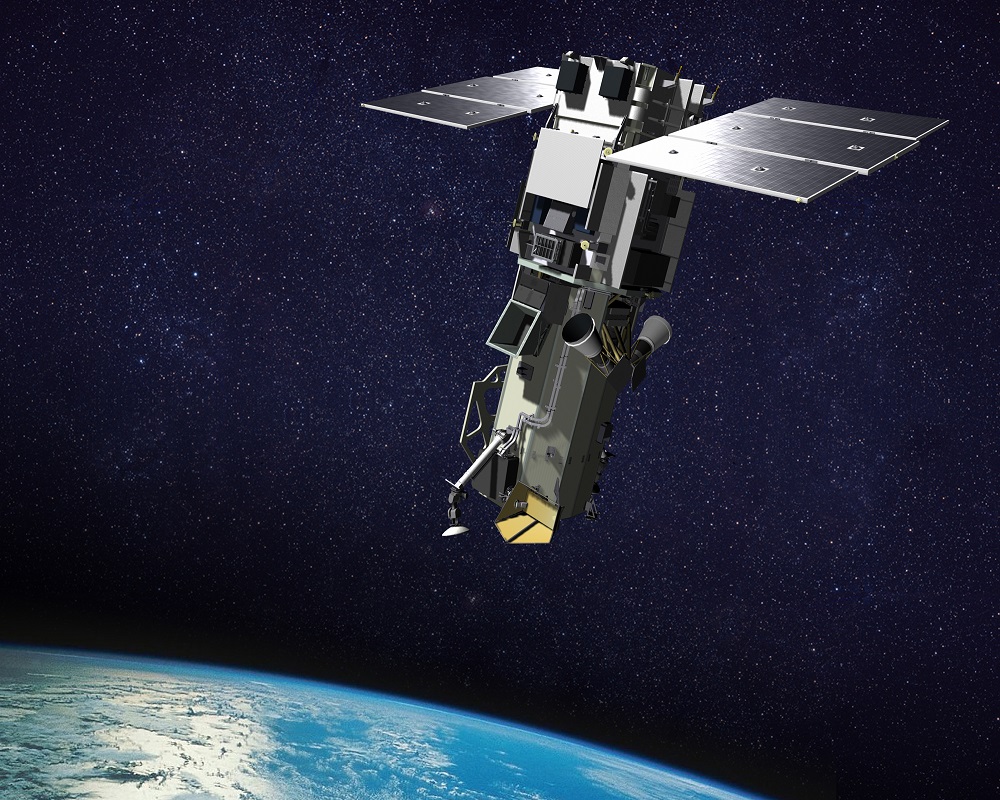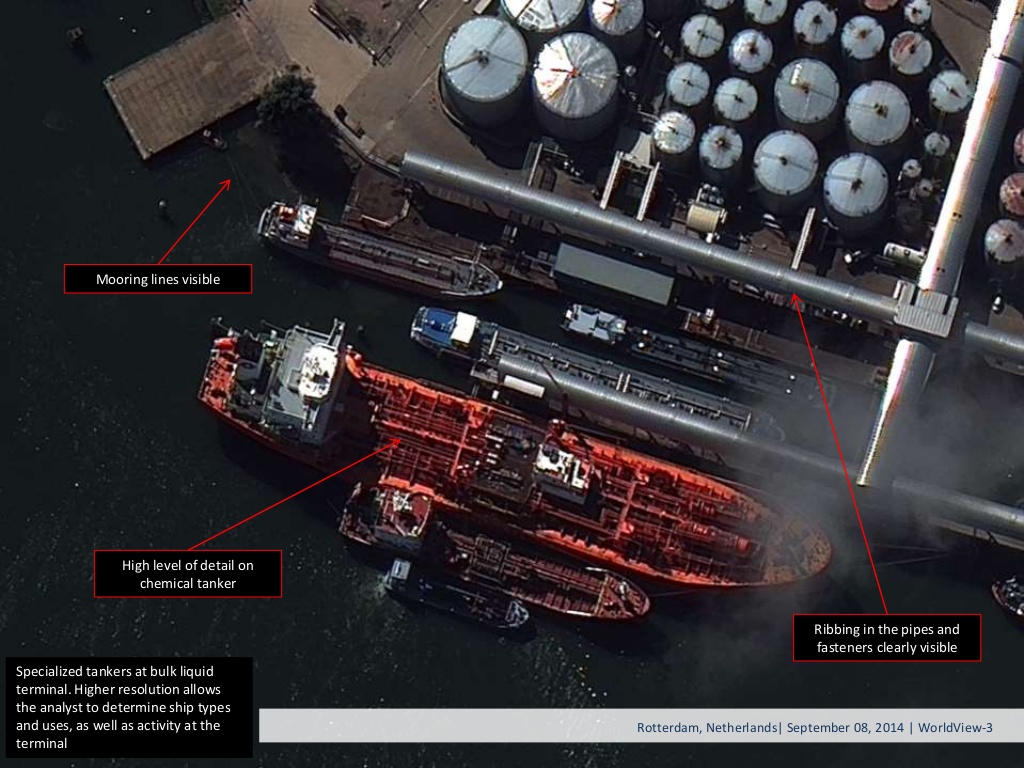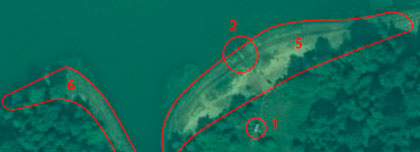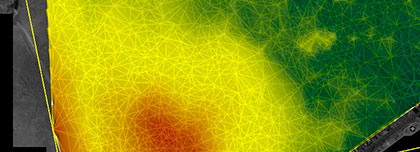Sat-Sun: Non-working days
Advancement in Earth remote sensing spacecraft continues at a rapid pace, opening new opportunities in civilian and military sectors. On August 13, 2014, the WorldView-3 satellite was launched from Vandenberg Air Force Base (California, USA) using an Atlas V 401 rocket.

Figure 1. WorldView-3 Satellite
With the launch of the WorldView-3 satellite, the space group of DigitalGlobe significantly enhanced its technological capabilities. WorldView-3 enables satellite imaging with a resolution of up to 0.31 meters. In multispectral mode, the system's resolution will be 1.2 meters, and in the near infrared (NIR) spectrum, it will be 3.7 meters. The addition of the new IR range required the inclusion of an additional 8-channel module with IR detectors in the satellite's optical system design.
Two years ago, the U.S. authorities agreed to reduce the limit on the maximum possible resolution of commercial satellite images from 50 cm to 25 cm. WorldView-3 became the first commercial satellite with improved resolution. Currently, DigitalGlobe is seeking to convince the United States government to relax restrictions on image resolution quality to 10 cm.
Ball Aerospace & Technologies is the prime contractor for the WorldView-3 satellite project. The satellite's optoelectronic system was developed by the Geospatial Systems division of ITT Exelis. The estimated cost of the satellite program is $650 million USD, including the satellite launch.
The WorldView-3 satellite was placed into a polar orbit at an altitude of 617 kilometers above Earth's surface and will operate alongside five other DigitalGlobe satellites. The satellite weighs 2,812 kilograms, and its dimensions with deployed solar panels are 5.7 by 7 meters. Technical specifications for the WorldView-2 and WorldView-3 satellites are shown in Table 1.
Table 1. Technical Specifications of WorldView-3 Satellite
|
|
|
|
|
|
|
|
|
|
|
|
|
|
|
|
|
|
|
|
|
|
|
|
|
|
The imaging equipment on WorldView-3 is similar to that on WorldView-2. WorldView-3 is equipped with a telescope featuring a 110 cm mirror diameter and an aperture filter. The equipment will capture images using sensors including VNIR (Visible and Near Infrared — multispectral visible and near-infrared range; 8 channels), SWIR (Shortwave Infrared — medium infrared range; capable of imaging through haze, fog, smoke, dust, and clouds; 8 channels), and CAVIS (clouds, aerosols, vapors, ice, snow — allows atmospheric correction; 12 channels).
The multispectral VNIR sensor slightly differs in its capabilities from the WV-2 sensor, with the main difference being slightly higher resolution. Continuity in spectral characteristics is important to maintain methods developed with WV-2 data.
A fundamentally new sensor is the Shortwave Infrared (SWIR) sensor. Previously, such data was obtained by lower-resolution satellites like Landsat, with a resolution of just 30 meters per pixel, whereas WV-3 achieves 3.7-4.1 meters per pixel at a 20º off-nadir view. The SWIR sensor also features eight channels covering the spectrum from 1195 to 2365 nanometers, chosen for vegetation properties, atmospheric processes, with the farthest four channels useful in geological studies.
Another innovative addition in WorldView-3's sensor suite is CAVIS, with a resolution of just 30 meters, covering selective bands from 405 nm to 2245 nm. Its primary function is to assess atmospheric conditions and identify special conditions on Earth's surface affecting image quality. The channel set is designed to distinguish between white clouds and snow/ice, as well as different types of airborne dust and smoke from water vapor. Similar technology was previously used on Landsat, but WorldView employs a more advanced and versatile system for more precise and effective image correction.
WorldView-3's spectral channels enable higher detail in vegetation analysis, object detection, and analysis of coastlines and coastal waters. The CAVIS sensor enables clear imaging despite atmospheric disturbances like dust and soot.
The positional accuracy in planimetry is 3.5 m CE90 without additional ground control point correction.
Technical characteristics of the onboard equipment of WorldView-3 are shown in Table 2:
Table 2. Technical characteristics of the onboard equipment of WorldView-3
|
Focal Length, m |
13.3 |
|||
|
Mirror Diameter, cm |
110 |
|||
|
Relative Aperture |
1:12 |
|||
|
Field of View Angle, degrees |
1.28 |
|||
|
Spectral Ranges, µm |
VNIR |
SWIR |
CAVIS |
|
|
Panchromatic 0.45-0.80 |
1.195–1.225 |
0.405–0.420 (Desert Clouds) |
||
|
Dynamic Range, bits |
11 |
14 |
11 |
|
|
Resolution, m |
PAN-0.31; MS-1.24 |
3.7 |
30 |
|
|
Swath Width, km |
13.1 |
|||
|
Positional Accuracy (CE90), m |
< 3.5 |
|||
|
Onboard Storage Capacity, Gbit |
2200 |
|||
|
Transmission Rate, Mbit/sec |
800 and 1200 |
|||
According to DigitalGlobe founder and Chief Technical Officer Walter Scott, "in the shortwave infrared part of the spectrum, differences between 'materials' become clearly visible." Among the potential civilian applications highlighted are mineral exploration, water resource management, and others. In the military domain, imaging in the new IR range could be valuable for detecting and classifying objects based on their IR signatures. While Walter Scott did not comment on the military use of the new imaging range, he noted its equal importance for both military and civilian users of the system.
One of DigitalGlobe's main clients is the National Geospatial-Intelligence Agency (NGA) of the United States, which in 2010 signed a 10-year contract with the company and another satellite operator, GeoEye, totaling over $7 billion USD for the provision of space imaging services.
The first images from the WorldView-3 satellite were captured over the capital of Spain, Madrid. Sample images are available with resampling to 40 cm. Fragments of satellite images can be downloaded for free at this link (TIF format).
A fragment of an image obtained from the WorldView-3 satellite over Rotterdam with a resolution of 40 cm is shown in Figure 2:

Figure 2 - Fragment of an image obtained from the WorldView-3 satellite over Rotterdam with a resolution of 40 cm
Innoter Company is the official distributor in Russia and CIS countries for leading global satellite data operators and provides delivery of archival and new space imaging materials for any territory on Earth.
The agreement with DigitalGlobe allows for obtaining archival and operational space imaging materials from optical-electronic satellites WorldView-4, WorldView-3, WorldView-2, WorldView-1, GeoEye-1, QuickBird, and Ikonos, providing image resolutions from 0.3 to 0.8 meters.
Additionally, DigitalGlobe offers a new service based on cloud computing called My DigitalGlobe. DigitalGlobe's cloud services offer customers access to the world's largest online library of ultra-high-resolution data, enabling access to the latest satellite imagery via geoprotals, intranet networks, and mobile devices anywhere on the planet. My DigitalGlobe includes services such as Global Basemap, FirstLook, Daily Take, and can also incorporate corporate user data.
For more information about the Global Basemap service, please contact Innoter company representatives.
To order ultra-high-resolution satellite images from DigitalGlobe satellites, as well as to calculate the cost of covering the area you need, please contact us by phone: +7 495 245-0424 or by e-mail: innoter@innoter.com.






